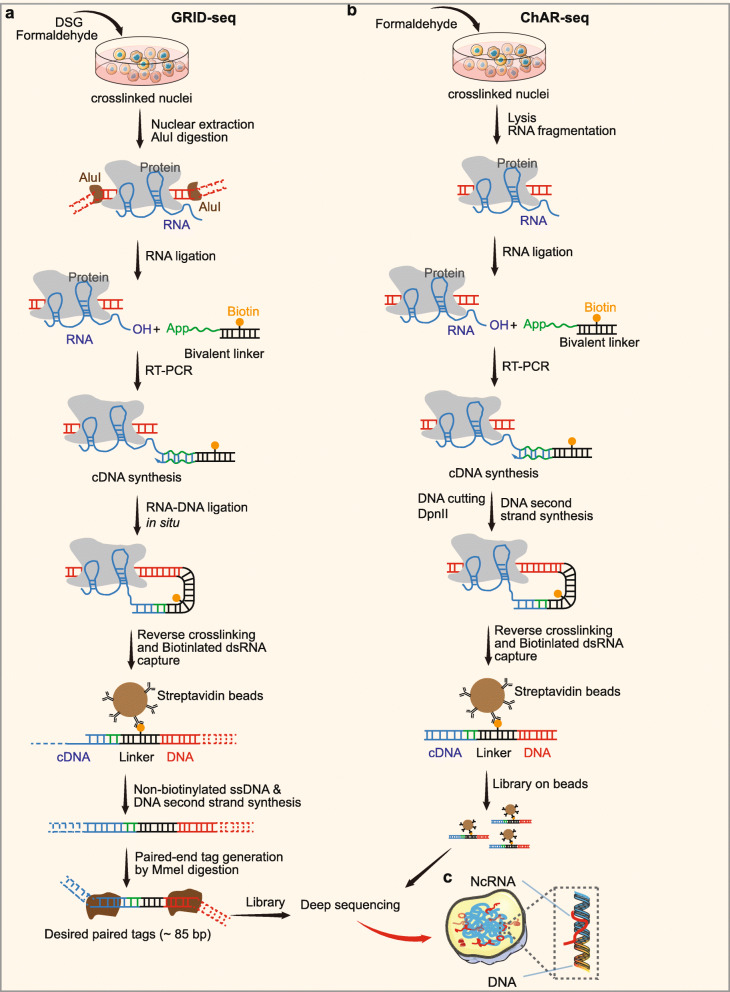Fig. 4.
Technologies for discovery of RNA-chromatin interaction. a Process diagrams of GRID-seq. Cells are fixed with disuccinimidyl glutarate (DSG) and formaldehyde. Then, nuclei are extracted, and DNA is digested in situ by the frequent 4-base cutter AluI. A specifically designed bivalent linker labeled by biotin that consists of single-stranded RNA (ssRNA) portions, to ligate RNA, and a double-stranded DNA (dsDNA) portion, to ligate DNA, is used to link RNAs to AluI-digested genomic DNAs. DNA ligation to AluI-digested genomic DNA are performed in situ followed by affinity purification on streptavidin beads. Then, ssDNA are released from the beads, generated into dsDNA, cleaved by a type II restriction enzyme MmeI and sequenced. b Overview of the ChAR-seq method. RNA-DNA contacts are preserved by crosslinking, followed by in situ ligation of the 3′ end of RNAs to the 5′ end of the ssDNA tail of a bivalent linker containing biotin and a DpnII-complementary overhang on the opposite end. After generating a strand of cDNA complementary to the RNA, the genomic DNA is then digested with DpnII and then re-ligated, capturing proximally associated bridge molecules and RNA. The chimeric molecules are reverse transcribed, purified, and sequenced

